#archduke ferdinand karl
Text

Archduke Ferdinand Karl (1628-1662), son of Archduke Leopold V, Prince of Tyrol. By Lorenzo Lippi.
#lorenzo lippi#erzherzog#erzherzog ferdinand karl#haus habsburg#gefürstete grafschaft tirol#tirol#archduke#house of habsburg#full-length portrait#archduke ferdinand karl#full length portrait#kunsthistorisches museum#Gefürstete Grafschaft Tirol
0 notes
Text
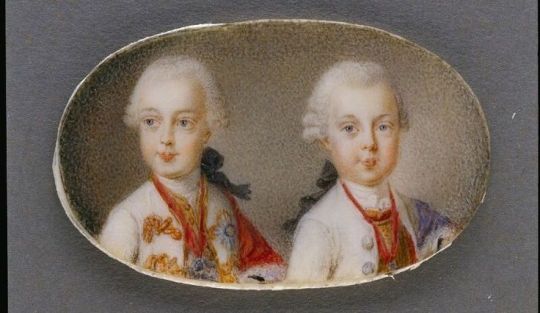
Ferdinand Karl and Maximilian Franz of Austria. By Antonio Bencini.
#erzherzogtum österreich#haus habsburg lothringen#erzherzog#archduke#maximilian franz of austria#ferdinand karl of austria#antonio bencini#royalty
4 notes
·
View notes
Text


Archduchess Maria Teresa of Austria (née Infanta of Portugal), with her stepchildren Archduchess Margarete and Archduke Ferdinand, by Ludwig Angerer, 1873.
Via the Royal Collection Trust and the Wien Museum.
#i thought the second pic was just a close up of the first pic but it's not! their poses are slightly different#maria teresa of braganza archduchess of austria#margarete of austria duchess of württenberg#archduke ferdinand karl of austria#house of habsburg#house of braganza
17 notes
·
View notes
Text

Ferdinand Karl Ludwig Joseph Johann Maria, Archduke of Austria
Austrian vintage postcard
#historic#briefkaart#maria#postkaart#austrian#carte postale#ephemera#habsburg#joseph#tarjeta#photo#ludwig#austria#johann#postcard#postal#karl#postkarte#ferdinand karl ludwig joseph johann maria#ansichtskarte#ferdinand#archduke#sepia#photography#vintage
2 notes
·
View notes
Text
The updated list of nominees so far:
France:
Jean Lannes
Josephine de Beauharnais
Thérésa Tallien
Jean-Andoche Junot
Joseph Fouché
Charles Maurice de Talleyrand
Joachim Murat
Michel Ney
Jean-Baptiste Bernadotte (Charles XIV of Sweden)
Louis-Francois Lejeune
Pierre Jacques Étienne Cambrinne
Napoleon I
Marshal Louis-Gabriel Suchet
Jacques de Trobriand
Jean de dieu soult.
François-Étienne-Christophe Kellermann
Louis Davout
Pauline Bonaparte, Duchess of Guastalla
Eugène de Beauharnais
Jean-Baptiste Bessières
Antoine-Jean Gros
Jérôme Bonaparte
Andre Masséna
England:
Richard Sharpe (The Sharpe Series)
Tom Pullings (Master and Commander)
Arthur Wellesley, 1st Duke of Wellington
Jonathan Strange (Jonathan Strange & Mr. Norrell)
Captain Jack Aubrey (Aubrey/Maturin books)
Horatio Hornblower (the Hornblower Books)
William Laurence (The Temeraire Series)
Austria:
Klemens von Metternich
Friedrich Bianchi, Duke of Casalanza
Franz I/II
Archduke Karl
Marie Louise
Poland:
Wincenty Krasiński
Józef Antoni Poniatowski
Józef Zajączek
Maria Walewska
Russia:
Alexander I Pavlovich
Alexander Andreevich Durov
Prince Andrei (War and Peace)
Pyotr Bagration
Mikhail Miloradovich
Levin August von Bennigsen
Prussia:
Louise von Mecklenburg-Strelitz
Gebard von Blücher
Carl von Clausewitz
Frederick William III
Gerhard von Scharnhorst
Louis Ferdinand of Prussia
Friederike of Mecklenburg-Strelitz
The Netherlands:
Ida St Elme
Wiliam, Prince of Orange
The Papal States:
Pius VII
#napoleonic sexyman tournament#there is something mildly funny about the English being overwhelmingly fictional Englishmen#and Wellington
56 notes
·
View notes
Text



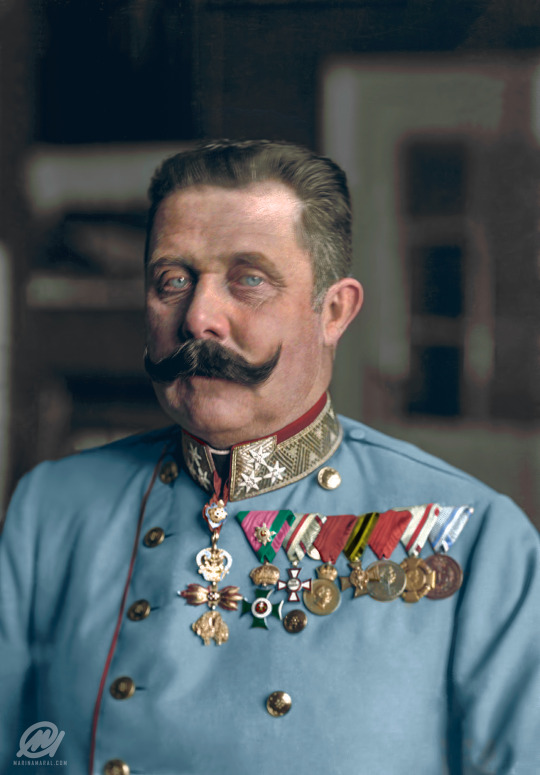
Archduke Karl, Herzog von Teschen (1771-1847): General during both the French Revolution and the Napoleonic Wars. If you have been to Vienna, you have likely seen his statue opposite Prince Eugene of Savoy on the Heldenplatz.
Archduke Johann, Reichsverweser of the German Empire (1782-1859): The reportedly liberal archduke who is most well-known for presiding over the Frankfurt Parliament in 1848 and his role as regent for the German Empire in 1848. There is a statue honoring him in Graz.
Archduke Josef, Palatine of Hungary (1776-1847): Elected Palatine of Hungary who represented Hungarian interests - often in conflict with Franz I/II (who is everyone's favorite here). Provided significant support for the establishment of the Hungarian National Museum and the National Library. There is a statue of him in Budapest that was unveiled after the 1867 Compromise.
Archduke Franz Ferdinand (1863-1914): It would be fair to say that the most famous thing he did was die, but given the consequences of his death, it would be harder for anything to be more significant. He also got married against the usual dynastic protocols and was relatively pro-Slavic.
#best habsburg bracket#admin 1's 19th century bias is probably showing#if you would like to do a similar poll for an earlier period you can give me ideas#everyone thank leopold II for having interesting children despite not being that interesting himself
15 notes
·
View notes
Photo

Her Imperial Highness, Archduchess Paulina of Augustinia (1764-1805) (formerly Princess Paulina of Norden)
She was born in 1764 at the Schloss Bentswich to Karl Duke of Norden and his Vasian wife, Princess Helene of Vasa. Paulina was the younger fraternal twin of Princess Maria Theresa who would become the Queen Consort of Porto. Princess Paulina had an incredibly close relationship with her twin Maria Theresa and her younger sister Princess Louise. Paulina’s mother Helene enforced a strict education on her daughters which proved to be stressful for the young princess compared to her other daughters. Paulina was loved by her father, while her mother somewhat resented her for her lack of intellectual skills. Despite Paulina’s difficulties in her studies she was still able to learn five languages and studied literature. In 1780, Paulina attended the wedding ceremony of her twin sister, Princess Maria Theresa to Crown Prince Luis of Porto. With Paulina’s two older sisters marrying a King and Crown Prince, the eyes of the Norden Court turned on her. In 1781, Norden found itself at war with several Germanic states such as Bremen which was allied with many other kingdoms and principalities. Due to Norden’s poor international relations, Helena was unable to find a suitable match for her daughter. Paulina corresponded with Maria Theresa often and discussed a potential match between Crown Prince Luis’ younger brother Infante Carlos Duke of Madiera however she found him insufferable when she met him at the wedding and would not convert to Jacobanism. In 1782 tragedy struck when Maria Theresa died during childbirth. Paulina and her mother Helena rushed to Porto to be with Luis and his new son Crown Prince Carlos. Paulina and Helena stayed at the court for seven months where it was suggested that King Luis marry Paulina. Paulina grew close to the king and even considered converting to Jacobanism to be with him and raise her nephew as her own son. However, the Portian government did not approve of the match and sought to find a new alliance. Paulina and Helene returned to Norden in 1783, and her mother decided to focus on finding a match for Paulina. In 1784 with the Calais Revolution starting, Norden allied itself with Augustinia and decided to cement it with marriage. In early 1784, Paulina was married to Archduke Ferindand of Augustinia, second in line to the throne of Augustinia. They were married in a huge ceremony at the Innsbruck Cathedral with the Germanic Court in attendance. Paulina did not convert to Jacobanism and remained Peteran with special permission to marry from the Patriarch. There were two wedding ceremonies, the Jacoban one at the cathedral, and a private Peteran one in the Blue Drawing Room of the Innsbruck Palace. Paulina enjoyed a close relationship with her mother-in-law who her sister Maria Theresa was named after, Infanta Maria Theresa of Almeria. Paulina and her husband Ferdinand did not have a happy marriage at all, shortly after the birth of her first child, Archduke Francis in 1784, she discovered her husband in bed with her lady in waiting, Baroness von Nordheim. Paulina came to detest her husband and tried to avoid him at all times, however she did occasionally perform her wifely duties when she needed to. In 1785 and 1786 she would give birth to two more living children, Archduchess Maria Leopoldina and Archduke Charles. Paulina and her children resided at the Innsbruck Palace where they had a close relationship with the Germanic Empress, Maria Theresa of Almeria. Paulina’s husband Ferdinand was made Governor of Graz and relocated to the Steyr Palace in 1790. Paulina had a close relationship with her three children and was a loving mother. They were raised alongside the children of her brother-in-law Joseph I. In 1792, Paulina’s father-in-law, Ferindand VIII passed away and Joseph became the new Germanic and Augustinian Emperor. Paulina was a leading lady at the coronation celebrations held in Graz, Tyrol, and Augustinia. Paulina was delighted by the marriages of her children, Archduke Francis to Princess Henriette de Valentinois, and Archduchess Maria Leopoldina to Crown Prince Alfonso of Porto. In 1805, Paulina died from a pneumonia at the Innsbruck Palace. Her husband Ferdinand, three children, and sister-in-law Empress Maria Leonora were at her bedside at her death. Paulina, while not close with her youngest sister Viktoria, often wrote to her. Viktoria and her daughter Sophie of Rostock attended the funeral and stayed at the Augustinian Court for two months, hoping to secure a match between Archduke Charles and Sophie, but this failed.
#SophieofRostock#SOR#sims4#ts4#the sims#the sims 4#ts royals#ts4 royals#s4#the sims 4 history#historical#historical royals
70 notes
·
View notes
Photo



The three wives of Archduke Karl Ludwig of Austria, younger brother of Franz Joseph I.
Margaretha of Saxony: His first wife was his cousin, they were married on November 4th, 1856. The marriage was described as happy but did not last long. Margaretha contracted typhoid while on a trip to Italy and died aged 18 on September 15th, 1858. The couple didn’t have any children.
Maria Annunciata of Bourbon-Two Sicilies: His second marriage was in October of 1862, and was also said to have been happy. The bride suffered from poor health, having had a seizure during mass the day of the wedding and was later found to be suffering from tuberculosis. They would have four children together, Archduke Franz Ferdinand, Archduke Otto, Archduke Ferdinand Karl, and Archduchess Margarete Sophie. Maria Annunciata became increasingly ill after their daughter’s birth, and died of tuberculosis on May 4th, 1871 when she was 28 years old.
Maria Theresa of Portugal: His third marriage was on July 23, 1873 and the bride was described as one of the most beautiful women in Europe. The couple had two daughters together, Archduchess Maria Annunciata (Named after his second wife) and Archduchess Elisabeth Amalie. It was not a happy marriage, as Karl Ludwig is said to have been very cruel to her. Maria Theresa stood in during court functions for her sister in law, Empress Elisabeth, who withdrew from court life after her son’s suicide. Karl Ludwig died in 1896, and Maria Theresa would outlive him by nearly 50 years, dying during the Second World War.
#archduke karl ludwig#Margaretha of Saxony#Maria Annunciata of Bourbon-Two Sicilies#Maria Theresa of Portugal#house of habsburg lorraine#austria#long live the queue
30 notes
·
View notes
Photo
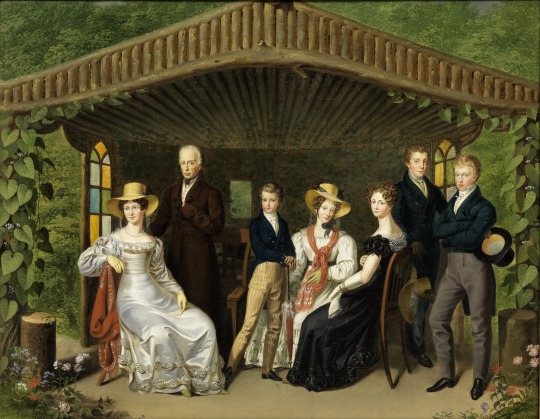

The Imperial Family Around the Duc de Reichstadt in a Gazebo by Leopold Fertbauer, 1926.
From left to right: Caroline Augusta of Bavaria, Empress of Austria; Francis I, Emperor of Austria; Napoleon II of France, Duke of Reichstadt; Princess Sophie of Bavaria, Archduchess of Austria; Marie-Louise of Austria, Duchess of Parma; Ferdinand I of Austria; and Archduke Franz Karl of Austria.
link

32 notes
·
View notes
Text
The Family <3
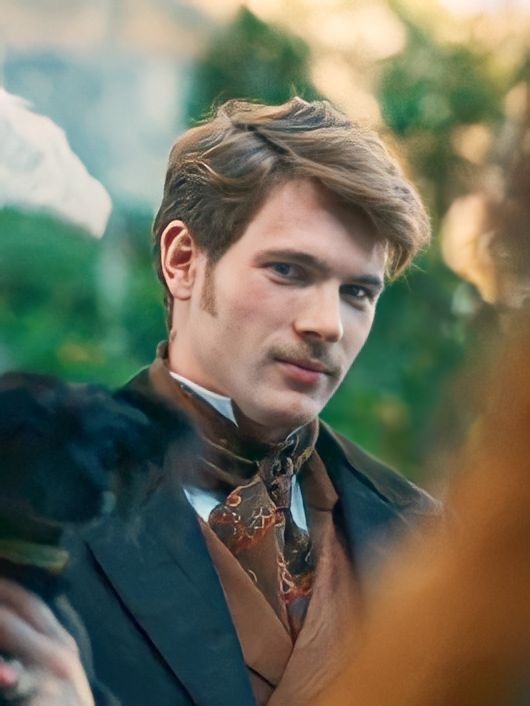

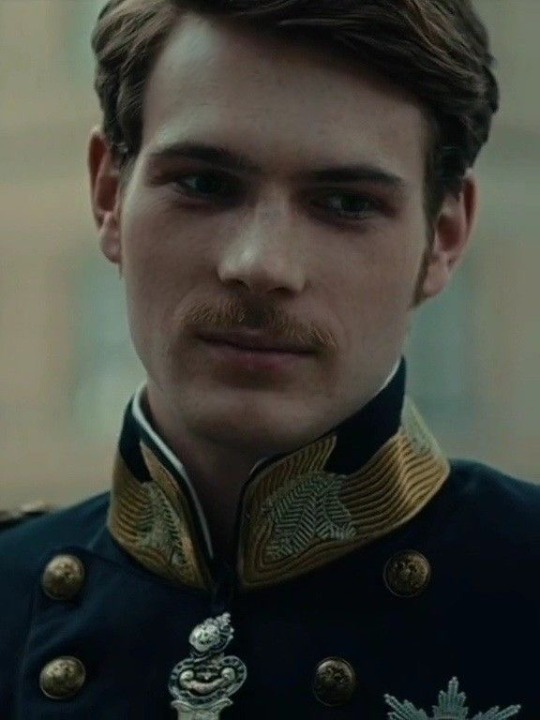

emperor Franz Joseph Of Austria And King Of Hungary (1816-1905)
age: 35
height: 6’4
birthday: 18th august
early life:
Franz Joseph was born on 18 August 1816 in the Schönbrunn Palace in Vienna (on the 65th anniversary of the death of Francis of Lorraine) as the eldest son of Archduke Franz Karl (the younger son of Francis I), and his wife Sophie, Princess of Bavaria. Because his uncle, reigning from 1835 as the Emperor Ferdinand, was disabled by seizures, and his father unambitious and retiring, the mother of the young Archduke "Franzi" brought him up as a future emperor, with emphasis on devotion, responsibility and diligence.

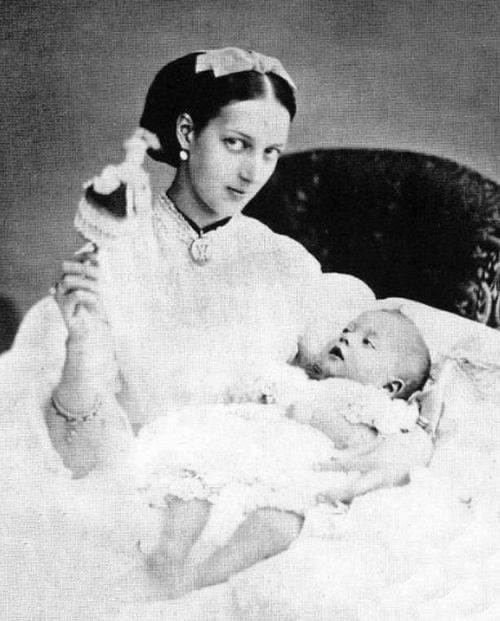
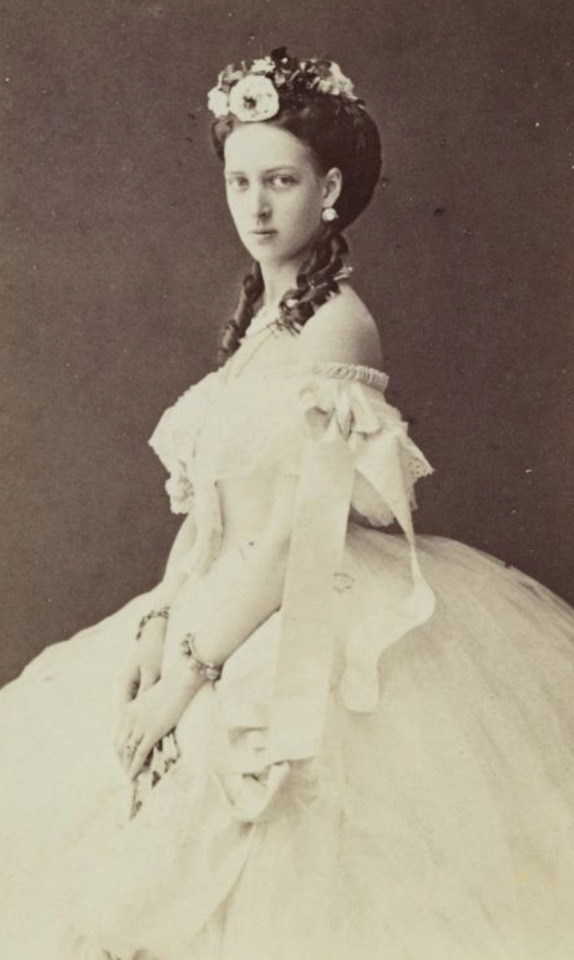
Empress Alexandra Of Austria, Queen Of Hungary (1816-1907)
age: 35
height: 5’10
birthday: 8th March
Early Life:
Princess Alexandra Caroline Marie Charlotte Louise Julia, or "Alix", as her immediate family knew her, was born at the Yellow Palace, an 18th-century town house at 18 Amaliegade, immediately adjacent to the Amalienborg Palacecomplex in Copenhagen.[1] Her father was Prince Christian of Schleswig-Holstein-Sonderburg-Glücksburg and her mother was Princess Louise of Hesse-Kassel.[2] She had five siblings: Frederick, William (later George I of Greece), Dagmar (later Empress of Russia), Thyra and Valdemar.
Her father's family was a distant cadet branch of the Danish royal House of Oldenburg, which was descended from King Christian III. Although they were of royal blood,[a] the family lived a comparatively modest life. They did not possess great wealth; her father's income from an army commission was about £800 per year and their house was a rent-free grace and favour property. Occasionally, Hans Christian Andersen was invited to call and tell the children stories before bedtime.

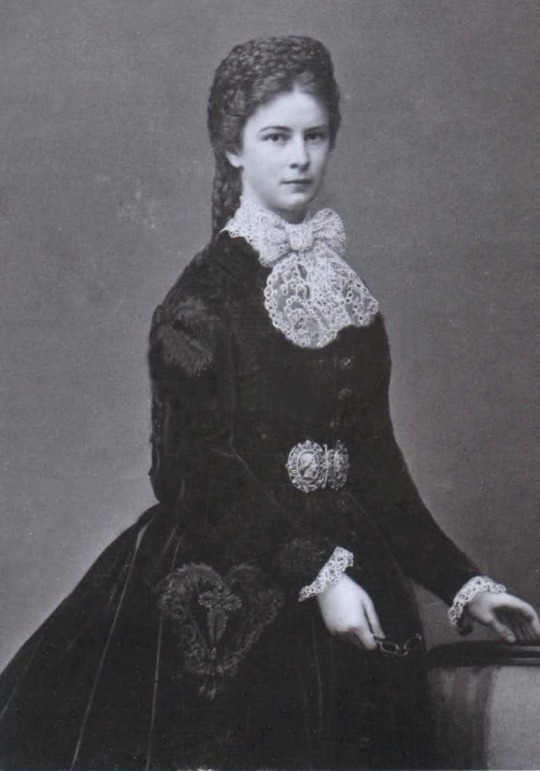

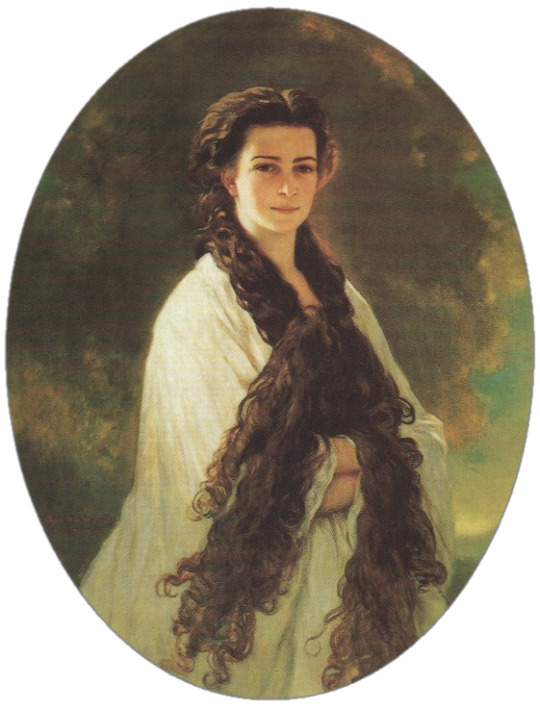

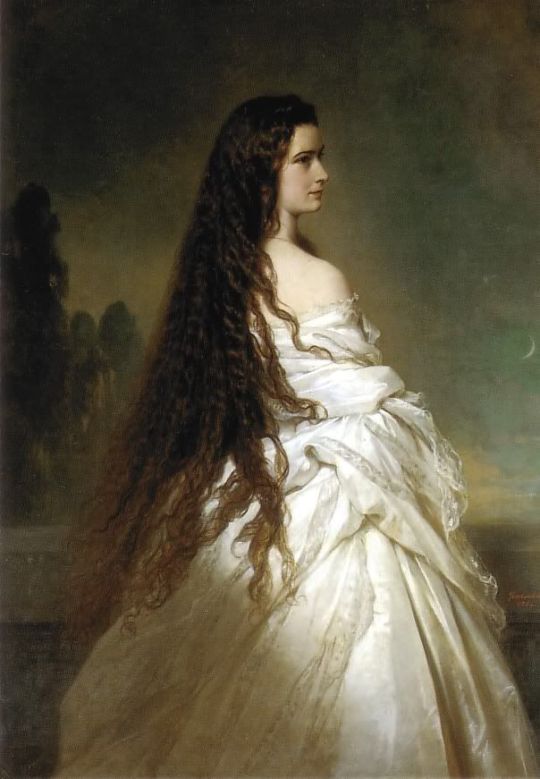
GrandDuchess Elisabeth Of Austria, Later Empress Of Austria And Queen Of Hungary at 19 Years old (1837-1927)
age: 14-15
height: 5’8
birthday: 24th December

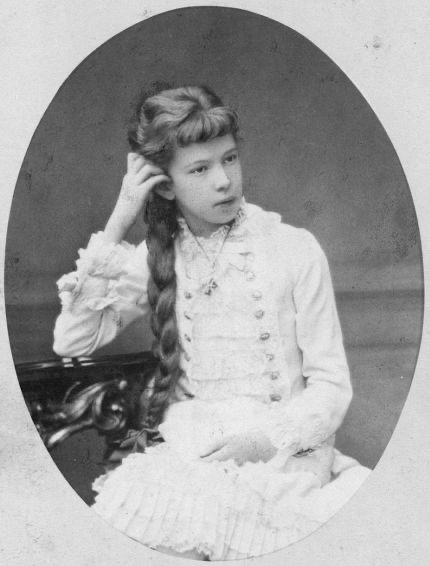
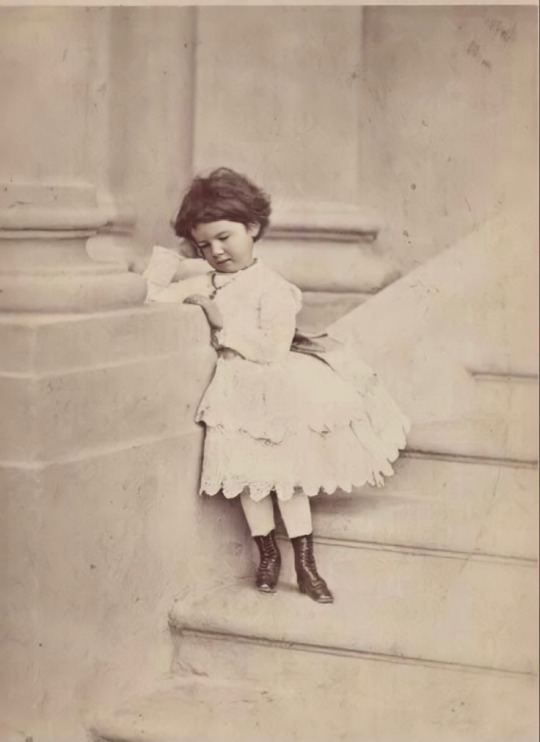
Marie Valerie (1840-1943) lmao Valerie lived a long time
Height: 5’3
age: 10
birthday: 24th april
5 notes
·
View notes
Photo

Archduke Franz Karl of Austria (1802–1878). By Leopold Kupelwieser.
He was the father of two emperors: Franz Joseph I of Austria and Maximilian I of Mexico. Through his third son Karl Ludwig, he was the grandfather of Archduke Franz Ferdinand of Austria (whose assassination sparked the hostilities that led to the outbreak of World War I) and the great-grandfather of the last Habsburg emperor Karl I.
#Leopold Kupelwieser#erzherzog#archduke#erzherzog franz karl#haus habsburg lothringen#full length portrait#house of habsburg lorraine#full-length portrait#in armour#kaisertum österreich#mexican empire#imperio mexicano#ww1
14 notes
·
View notes
Text
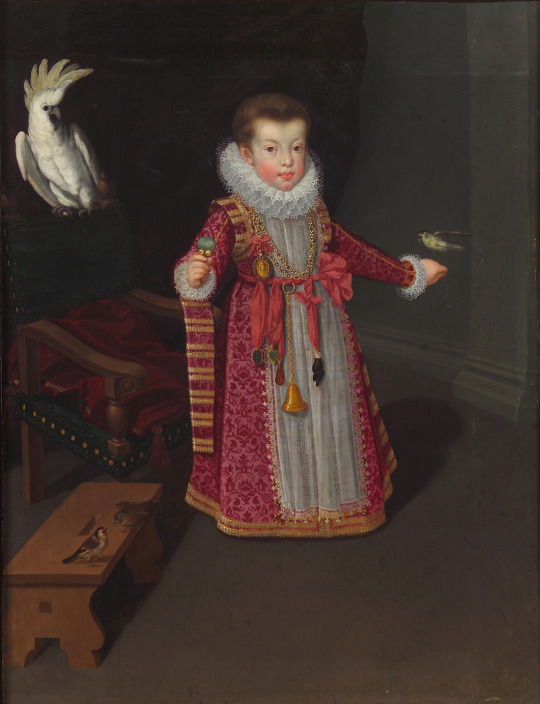
Archduke Johann Karl (1605-1619) at the age of about three. Unknown artist.
He was the son of Ferdinand II of Habsburg.
#erzherzogtum österreich#archduke johann karl#erzherzog#johann karl#kunsthistorisches museum#archduke#austria#österreich#house of habsburg#haus habsburg#full length portrait#full-length portrait
5 notes
·
View notes
Text

Archduke Karl of Austria-Teschen and his children, by Johann Ender, 1832. From left to right: Archduke Wilhelm, Archduke Karl Ferdinand, Archduchess Maria Theresa (future Queen of the Two Sicilies), Archduke Karl, Archduke Albrecht, Archduchess Maria Karolina, and Archduke Friedrich Ferdinand. In the left corner there is a bust of Princess Henriette of Naussau-Weilburg, the children's late mother.
#i can't remember how I ended up stumbling upon this portrait tbh#but I've got to learn more about the teschen branch#archduke karl of austria duke of teschen#queen maria theresa of the two sicilies#archduke albrecht of austria duke of teschen#archduke wilhelm of austria-teschen#archduke karl ferdinand of austria-teschen#archduchess maria karolina of austria-teschen#archduke friedrich ferdinand of austria-teschen#house of habsburg#artist: johann ender
25 notes
·
View notes
Text

Archduke Franz Salvator Maria Joseph Ferdinand Karl Leopold Anton of Padua, Johann Baptist Januarius Aloys Gonzaga Rainer Benedikt Bernhard of Austria
Austrian vintage postcard
#vintage#tarjeta#joseph#maria joseph ferdinand karl leopold anton#franz salvator#salvator#maria#archduke#briefkaart#franz#postcard#photography#gonzaga#leopold#postal#carte postale#sepia#padua#ephemera#januarius aloys#baptist#anton#historic#karl#benedikt bernhard#austria#aloys#ansichtskarte#rainer#bernhard
1 note
·
View note
Text
I looked up Archduke Franz Ferdinand to check if part of his name was (or could have been given as) Charles and one of Google's 'people also asked' is "Whose assassination was the final straw?"
Not the final straw for WWI or the fall of the Austro-Hungarian empire or whatever, just the final straw in general.
(Fwiw, Ferdinand Karl was his little brother. These Hapsburg dudes should have been more creative with their names.)
3 notes
·
View notes
Text
Friends, enemies, comrades, Jacobins, Monarchist, Bonapartists, gather round. We have an important announcement:
The continent is beset with war. A tenacious general from Corsica has ignited conflict from Madrid to Moscow and made ancient dynasties tremble. Depending on your particular political leanings, this is either the triumph of a great man out of the chaos of The Terror, a betrayal of the values of the French Revolution, or the rule of the greatest upstart tyrant since Caesar.
But, our grand tournament is here to ask the most important question: Now that the flower of European nobility is arrayed on the battlefield in the sexiest uniforms that European history has yet produced (or indeed, may ever produce), who is the most fuckable?
The bracket is here: full bracket and just quadrant I
Want to nominate someone from the Western Hemisphere who was involved in the ever so sexy dismantling of the Spanish empire? (or the Portuguese or French American colonies as well) You can do it here
The People have created this list of nominees:
France:
Jean Lannes
Josephine de Beauharnais
Thérésa Tallien
Jean-Andoche Junot
Joseph Fouché
Charles Maurice de Talleyrand
Joachim Murat
Michel Ney
Jean-Baptiste Bernadotte (Charles XIV of Sweden)
Louis-Francois Lejeune
Pierre Jacques Étienne Cambrinne
Napoleon I
Marshal Louis-Gabriel Suchet
Jacques de Trobriand
Jean de dieu soult.
François-Étienne-Christophe Kellermann
17.Louis Davout
Pauline Bonaparte, Duchess of Guastalla
Eugène de Beauharnais
Jean-Baptiste Bessières
Antoine-Jean Gros
Jérôme Bonaparte
Andrea Masséna
Antoine Charles Louis de Lasalle
Germaine de Staël
Thomas-Alexandre Dumas
René de Traviere (The Purple Mask)
Claude Victor Perrin
Laurent de Gouvion Saint-Cyr
François Joseph Lefebvre
Major Andre Cotard (Hornblower Series)
Edouard Mortier
Hippolyte Charles
Nicolas Charles Oudinot
Emmanuel de Grouchy
Pierre-Charles Villeneuve
Géraud Duroc
Georges Pontmercy (Les Mis)
Auguste Frédéric Louis Viesse de Marmont
Juliette Récamier
Bon-Adrien Jeannot de Moncey
Louis-Alexandre Berthier
Étienne Jacques-Joseph-Alexandre Macdonald
Jean-Mathieu-Philibert Sérurier
Catherine Dominique de Pérignon
Guillaume Marie-Anne Brune
Jean-Baptiste Jourdan
Charles-Pierre Augereau
Auguste François-Marie de Colbert-Chabanais
England:
Richard Sharpe (The Sharpe Series)
Tom Pullings (Master and Commander)
Arthur Wellesley, 1st Duke of Wellington
Jonathan Strange (Jonathan Strange & Mr. Norrell)
Captain Jack Aubrey (Aubrey/Maturin books)
Horatio Hornblower (the Hornblower Books)
William Laurence (The Temeraire Series)
Henry Paget, 1st Marquess of Anglesey
Beau Brummell
Emma, Lady Hamilton
Benjamin Bathurst
Horatio Nelson
Admiral Edward Pellew
Sir Philip Bowes Vere Broke
Sidney Smith
Percy Smythe, 6th Viscount Strangford
George IV
Capt. Anthony Trumbull (The Pride and the Passion)
Barbara Childe (An Infamous Army)
Doctor Maturin (Aubrey/Maturin books)
William Pitt the Younger
Robert Stewart, 2nd Marquess of Londonderry (Lord Castlereagh)
George Canning
Scotland:
Thomas Cochrane
Colquhoun Grant
Ireland:
Arthur O'Connor
Thomas Russell
Robert Emmet
Austria:
Klemens von Metternich
Friedrich Bianchi, Duke of Casalanza
Franz I/II
Archduke Karl
Marie Louise
Franz Grillparzer
Wilhelmine von Biron
Poland:
Wincenty Krasiński
Józef Antoni Poniatowski
Józef Zajączek
Maria Walewska
Władysław Franciszek Jabłonowski
Adam Jerzy Czartoryski
Antoni Amilkar Kosiński
Zofia Czartoryska-Zamoyska
Stanislaw Kurcyusz
Russia:
Alexander I Pavlovich
Alexander Andreevich Durov
Prince Andrei (War and Peace)
Pyotr Bagration
Mikhail Miloradovich
Levin August von Bennigsen
Pavel Stroganov
Empress Elizabeth Alexeievna
Karl Wilhelm von Toll
Dmitri Kuruta
Alexander Alexeevich Tuchkov
Barclay de Tolly
Fyodor Grigorevich Gogel
Ekaterina Pavlovna Bagration
Ippolit Kuragin (War and Peace)
Prussia:
Louise von Mecklenburg-Strelitz
Gebard von Blücher
Carl von Clausewitz
Frederick William III
Gerhard von Scharnhorst
Louis Ferdinand of Prussia
Friederike of Mecklenburg-Strelitz
Alexander von Humboldt
Dorothea von Biron
The Netherlands:
Ida St Elme
Wiliam, Prince of Orange
The Papal States:
Pius VII
Portugal:
João Severiano Maciel da Costa
Spain:
Juan Martín Díez
José de Palafox
Inês Bilbatua (Goya's Ghosts)
Haiti:
Alexandre Pétion
Sardinia:
Vittorio Emanuele I
Lombardy:
Alessandro Manzoni
Denmark:
Frederik VI
Sweden:
Gustav IV Adolph
49 notes
·
View notes